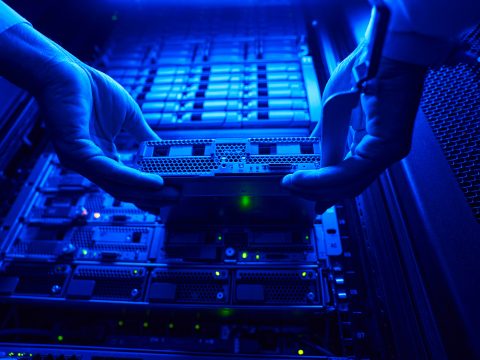While K-12 schools have been slow to adopt augmented and virtual reality tools at scale, some ed-tech researchers and experts believe such tools might still play a key role in supporting social and emotional learning (SEL) as they become more functional and accessible.According to a recent study from researchers at Central China Normal University examining the development of AR/VR educational technologies and use cases since 2013, augmented and virtual realities can provide students a space where they can repeatedly practice and improve social and emotional skills in a private, judgement-free environment, which can be beneficial for students with autism and social anxiety. In addition, the report found that VR simulation games focusing on building teamwork and other social and emotional skills can be particularly impactful for young children and adolescents.“Virtual worlds not only simulate daily life in the physical world, but also allow children exploration of the environment and engagement in open communication, thereby enabling them to safely practice their social skills,” the report read.
Liz Hyman, president and CEO of the XR Association, a trade association that promotes AR/VR/XR technologies, said that while tech costs remain an adoption barrier for schools, the technology has been improving in recent years for education applications. She noted that in a 2022 XRA survey of over 1,400 high school educators conducted with the International Society for Technology in Education, nearly 70 percent of teachers said they hoped their schools would adopt AR/VR technologies and use them regularly to enhance instruction. She added that 77 percent of the educators said AR/VR technology was valuable for teaching social skills, and empathy specifically.“Certainly, we’re seeing [extended reality] expand its application in the classroom, but we are also seeing increased use of XR to address mental health. One promising area is peer-to-peer counseling in the metaverse,” she said, noting a growing optimism among educators about using AR/VR tools in the years ahead.Among the many ed-tech companies developing and experimenting with AR/VR simulation-based digital learning programs, Discovery Education recently launched a VR program that allows students to explore New York City and learn more about science, technology, engineering and math (STEM)-related careers along the way. Phil Birchinall, Discovery Education’s senior director of immersive content, said that he believes AR/VR’s ability to put students in scenarios where they can practice communication and collaboration skills could make a difference in efforts to promote student mental health and SEL, a major concern for K-12 schools in the aftermath of the deadly COVID-19 pandemic.“The thing about augmented reality and virtual reality is it’s this great amplifier, and it creates this experiential learning scenario. When [students are] collaborating, all the soft skills are starting to come in. They’re using immersive content to solve problems as if they are actually there,” he said. “You can go anywhere with it. … Understanding environments, understanding scenarios, and just being able to navigate through those in an immersive way [makes AR/VR] a powerful learning tool.”Ari Lightman, a professor of digital media at Carnegie Mellon University, noted that AR/VR technology has been gaining more traction at universities in recent years, adding that the technology has been used for teaching nursing students how to navigate medical scenarios and for workforce training, among other applications where SEL comes into play. In addition, several universities have been working over the past year to develop and launch their own metaversities, or “digital twin” campuses, where students can attend courses using Meta Quest 2 VR headsets provided through a partnership with VictoryXR and Meta announced last summer.Lightman agreed that AR/VR technology could prove to be a vital tool in efforts to promote SEL in K-12, and student mental health in general, but reiterated that adoption costs remain a key barrier.“AR and VR can be used for a variety of different cases,” he said. “A lot of kids are visual learners. … I believe it could help tremendously in terms of understanding how to respond within specific situations.”Touching on adoption costs, the Central China report recommended that schools conduct their own cost–benefit analyses to understand the economic and labor implications of using VR for SEL interventions. Luckily, for schools that cannot afford expensive VR headsets and other hardware, the report noted that advancements over the past decade in mobile technology and smartphones could eventually make AR and other simulation-based learning programs more accessible.“Although VR may prove to be effective in numerous areas, the purchasing of VR equipment and developing of VR scenarios remain quite expensive. Most current research fails to account for the costs associated with utilizing VR,” the study noted.
Source: https://www.govtech.com/education/k-12/what-could-ar-vr-do-for-social-and-emotional-learning






